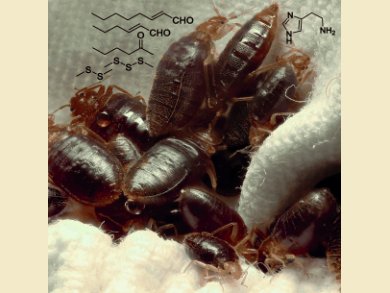Bed bugs are blood-feeding parasites that can post severe health threats to human beings. While bed bug infestation has become a global epidemic, current techniques for detecting and controlling bed bugs still remain underdeveloped and expensive.
As the aggregation pheromone of bed bugs is critical to their infestation, Robert Britton, Gerhard Gries, and colleagues at Simon Fraser University, Burnaby, British Columbia, Canada, isolate and characterize its chemical components. While five volatile compounds, including dimethyl disulfide, dimethyl trisulfide, (E)-2-hexenal, (E)-2-octenal, 2-hexanone, can attract bed bugs, the less-volatile histamine will arrest them upon close contact. A combination of all six components is highly effective at luring bed bugs into traps
This study has revealed the mechanism of bed bug aggregation pheromone, in which a synergy between its components causes attraction and arrestment. The aggregation pheromone can be used as an effective and low-cost lure to trap and control bed bugs.
- Bed Bug Aggregation Pheromone Finally Identified,
Regine Gries, Robert Britton, Michael Holmes, Huimin Zhai, Jason Draper, Gerhard Gries,
Angew-Chem. Int. Ed. 2014.
DOI: 10.1002/anie.201409890



